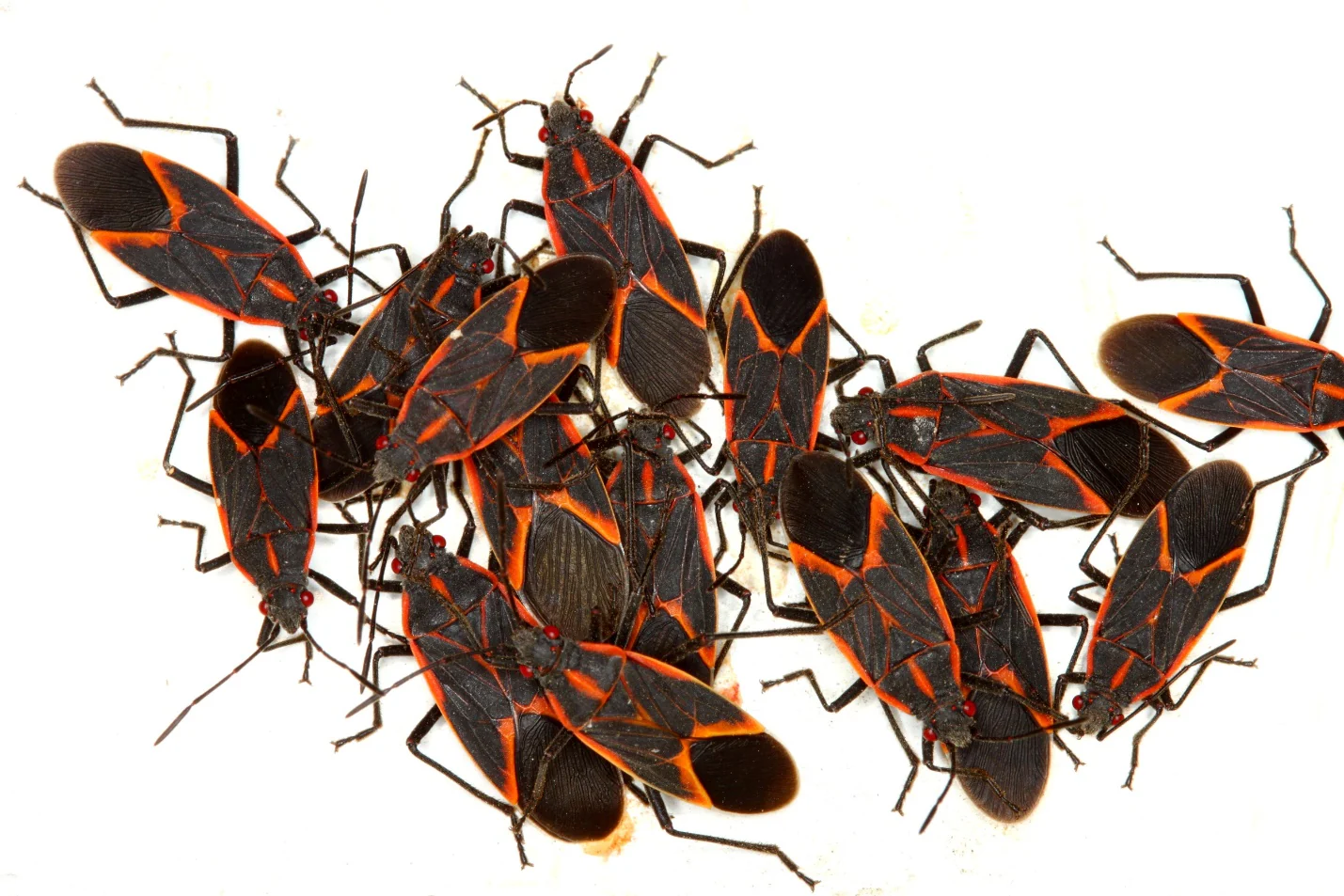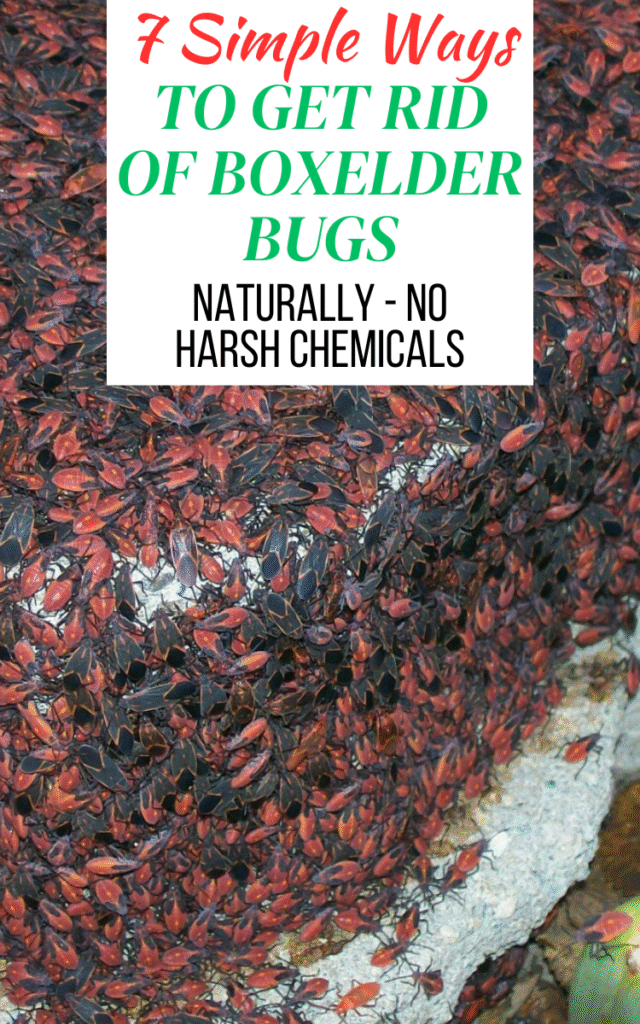
I think we can all agree on one thing: few things disrupt the pleasant calm of a late summer or early autumn afternoon quite like a sudden, buzzing takeover. You step outside to enjoy the sun and there they are—a sea of black and red, clinging to the warmest, sunniest wall of your house, crawling across your patio furniture, and worst of all, trying to squeeze through that tiny gap under the back door. These are, of course, the boxelder bugs, and while they are mostly harmless, their sheer numbers make them an absolute nuisance.
The good news is that we don’t need harsh chemicals or expensive exterminators to handle this yearly invasion. Boxelder bugs are surprisingly vulnerable to simple, natural solutions, and choosing a non-toxic approach is always better for the environment, our pets, and the beneficial insects we actually want around the garden. This is about being smart and targeted, not aggressive.
I’ve spent years experimenting with what works best for these sun-loving little invaders, and I’ve narrowed it down to seven practical, chemical-free methods. These strategies offer everything from instant relief when a swarm shows up to long-term prevention that can seriously cut down on next year’s population. Let’s now explore how you can reclaim your space without reaching for the synthetic stuff.
The 7 Natural Ways to Control Boxelder Bugs
Method 1: The Essential Soap and Water Solution (Immediate Knockdown)
This is my absolute favorite quick-fix because it’s cheap, effective, and you probably have the ingredients sitting next to your kitchen sink right now. The magic here is the dish soap, which isn’t a poison but a disruptor. Boxelder bugs, like many insects, have a waxy outer layer that protects them. When soap comes into contact with that layer, it breaks down the surface tension and causes the bug to lose moisture rapidly—a process that leads to swift dehydration and death.
To mix up a batch, I use a simple ratio: about 1 to 2 tablespoons of mild liquid dish soap (I prefer a biodegradable brand) for every gallon of water. You want to mix it gently so it doesn’t foam up too much, then pour it into a simple spray bottle or a large garden sprayer. The key to successful application is saturation—you need to spray the solution directly onto the clusters and individual bugs, coating them thoroughly.
I’ve had the most success targeting the warm, sunny spots on the south or west sides of the house where they inevitably congregate to sunbathe. Just remember one crucial step before you go to town: test a small, inconspicuous area of your ornamental plants first. While mild soap is generally safe, some concentrated dish soaps can damage sensitive foliage, and we don’t want to solve one problem by creating another.
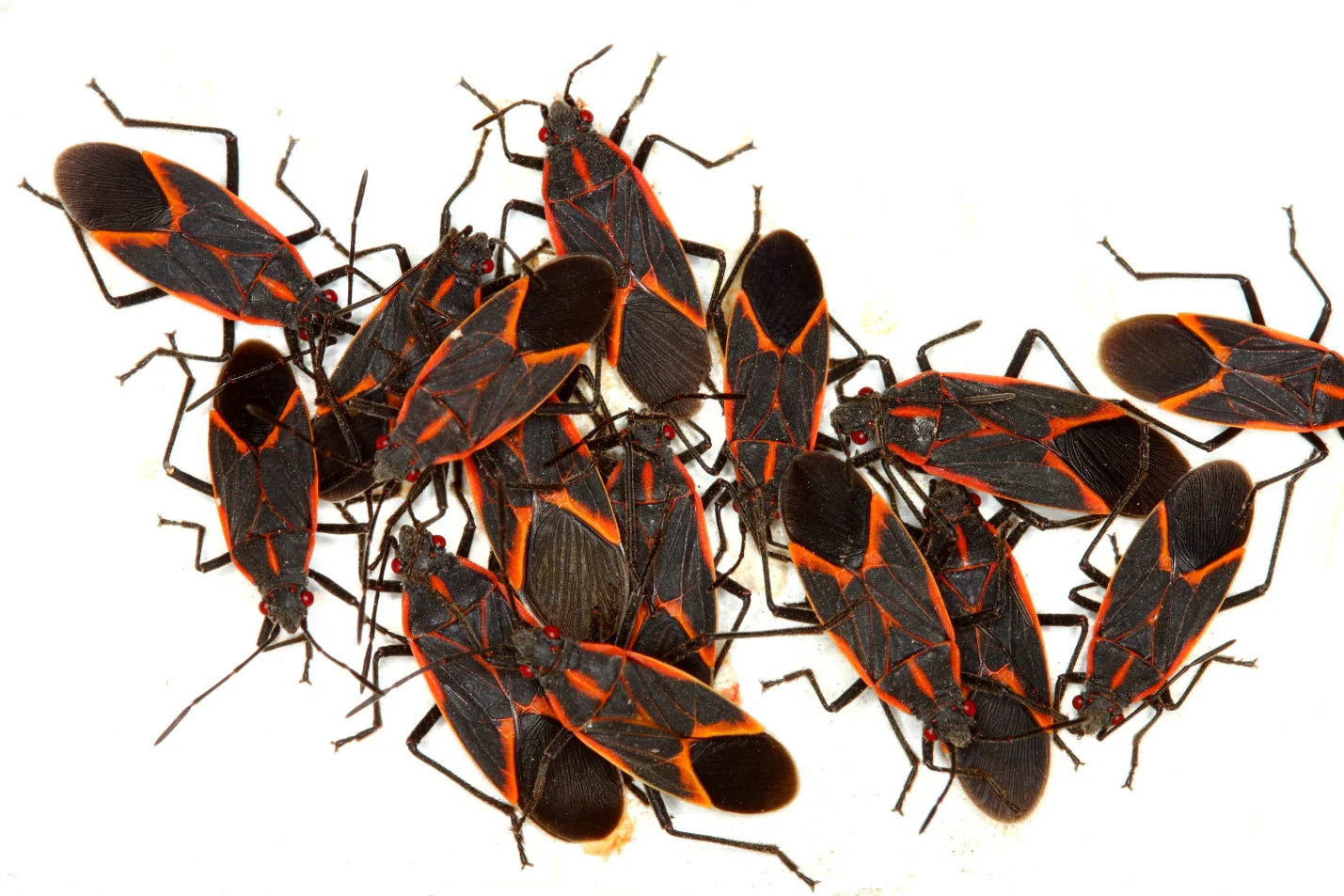
Method 2: High-Powered Vacuuming (Indoor & Large Clusters)
When you see hundreds of bugs suddenly covering a wall or, heaven forbid, they’ve gotten inside your home, sometimes you just need to skip the waiting game and use brute force. That’s where the high-powered vacuum comes in. This method is fantastic for large, static clusters outdoors or for rescuing your living room from a handful of explorers. A shop vacuum works best, but any standard vacuum with a hose attachment will do the trick for indoor cleanup.
The biggest drawback to dealing with boxelder bugs is the smell; they release a rather pungent, stinky defensive odor when they feel threatened. To neutralize this instantly and ensure the bugs don’t crawl out of the canister later, I always recommend putting a few inches of soapy water directly into the shop vac’s canister before starting. If you’re using a bagged household vacuum, you must immediately remove the bag, seal it tightly, and take it to an outdoor garbage bin right away, otherwise, you’ll have a very stinky situation on your hands.
I had one year where a surprising number managed to get into the eaves of my garage, and I found them clustered by the hundreds in the afternoon sun. Pulling out the shop vac with the soapy water was the only thing that gave me instant satisfaction and relief. This method is incredibly fast, non-toxic, and gives you a major psychological win against the invasion.
Method 3: Exclusion is Key (Sealing Entry Points)
While killing the bugs you see offers immediate satisfaction, the most effective long-term defense is making sure they never get past your perimeter. My goal isn’t to eradicate them from the neighborhood (they have a role to play), but to prevent them from moving from the harmless exterior to the dreaded interior. This is what we call exclusion, and it means inspecting your home from the foundation up for any potential gaps.
I always start with the usual suspects: checking every window screen for tiny tears, examining the door sweeps at the bottom of exterior doors, and testing the weather stripping around the door frame itself. Boxelder bugs can flatten themselves out quite thin, so even a gap that looks insignificant can be a highway for them when they are looking for a warm place to overwinter.
Once I find a gap, I use high-quality silicone caulk to seal up any utility openings (where cables or pipes enter the house) and any cracks in the foundation or siding. For doors, replacing old, hardened door sweeps or worn-out weather stripping is a must. A few hours spent on this exclusion maintenance in late summer can mean the difference between seeing a few stragglers and cleaning up massive indoor swarms all winter.
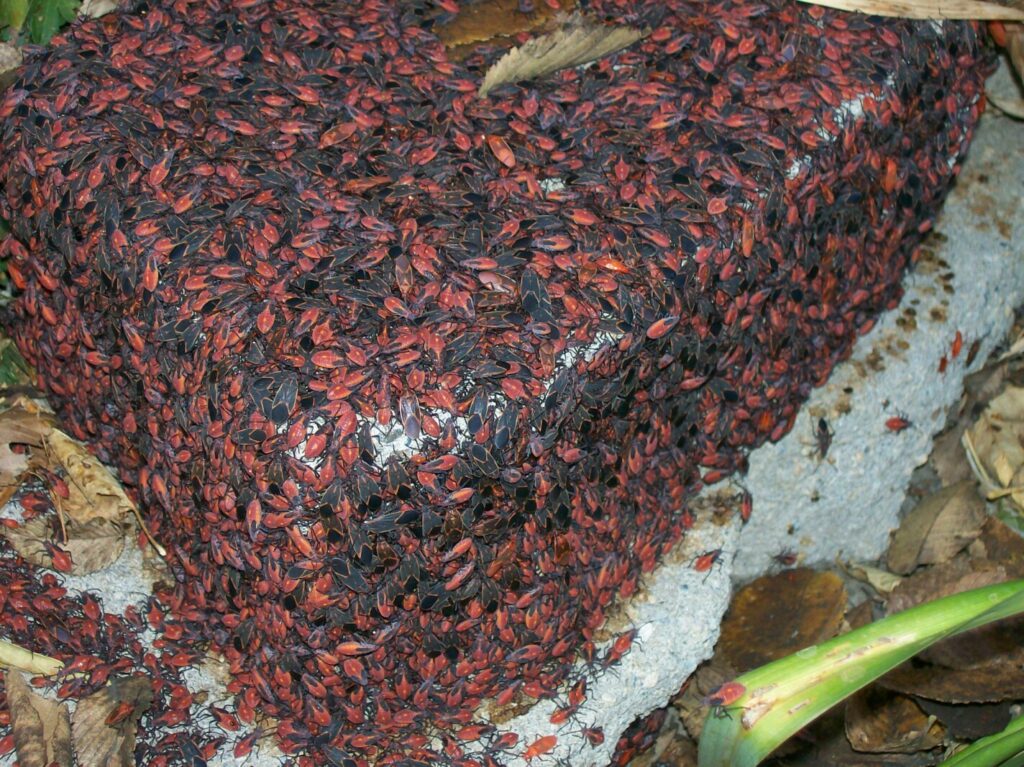
Method 4: Diatomaceous Earth (DE) Barrier
If you want a powerful, non-toxic, and long-lasting barrier, Diatomaceous Earth (DE) is your secret weapon. This isn’t soil; it’s a fine, natural powder made from the fossilized remains of diatoms, which are tiny, hard-shelled aquatic organisms. While it feels soft to us, under a microscope, DE looks like shattered glass, and it works by being abrasive to the insect’s exoskeleton, slicing through it and causing them to slowly dehydrate.
When applying DE, you want to use food-grade DE and apply a thin, almost invisible layer. If you can see thick clumps of white powder, you’ve used too much. I focus on laying a protective perimeter right at the foundation line, along exterior window sills, and in any small cracks or crevices where I suspect they are attempting entry. It’s a fantastic, chemical-free line of defense that keeps working 24/7.
The only caveat to using DE is that it must remain dry to be effective. As soon as it gets wet from rain or even heavy dew, it loses its abrasive edge. Therefore, if we get a heavy downpour, I know I need to head out and re-dust the perimeter once everything dries out again. This small reapplication effort is definitely worth it for the peace of mind it offers.
Method 5: Targeted Watering and Temperature Control
This method relies on outsmarting the boxelder bug’s behavior, not necessarily killing them. The reason they congregate on your house in the fall is simple: they are seeking the warmest, driest spots to sunbathe and prepare for overwintering, which is almost always the south or west-facing walls of your home. If you make those favorite spots less appealing, you can disrupt their massive clustering behavior.
The action is simple: on a sunny afternoon when you see them starting to clump together, grab your garden hose and give the wall or surface they are covering a light spray-down. The goal here is not to blast them off the wall, but to quickly drop the surface temperature and increase the humidity of the area. This makes the environment temporarily less desirable for their sunbathing activities.
I’ve found that even a brief, light watering can often cause the cluster to disperse and move elsewhere, which is a victory in itself. This is more of a deterrence tactic than a kill method, and it works particularly well in conjunction with the other solutions, keeping the numbers down on your primary exterior walls until they decide to move on for the season.
Method 6: Remove/Manage Host Plants and Seeds
If you want to solve the problem at the source, you have to look at their primary food source: the Boxelder tree (Acer negundo). These bugs feed almost exclusively on the seeds of the female boxelder trees (though they’ll sometimes nibble on other maples and ash). If you have one of these trees in your yard or nearby, you’re essentially providing a buffet and a nursery for them.
The ultimate long-term solution is often the most drastic: consider removing or replacing the female boxelder trees near your home with a non-seed-bearing male variety, or choosing a completely different kind of shade tree. Obviously, this is a big, expensive decision and usually only feasible if the tree is small or causing other problems. For most people, removal is not practical or desirable.
A much simpler, immediate management technique focuses on cleanup. The bugs feast on fallen seeds. As soon as the seeds drop in the late summer and fall, I make a point of raking, sweeping, or blowing away the debris from the ground, patio, and foundation immediately next to the house. Removing that food source ensures that the bugs won’t linger near your home, encouraging them to stay further away from your walls and entry points.
Method 7: Essential Oil Repellents
Finally, we can harness the power of strong natural scents to create an invisible, olfactory boundary. Many essential oils, especially strong-smelling ones like peppermint, clove, and citrus, are known to be natural deterrents for boxelder bugs. They dislike the concentrated aroma and will often turn around rather than cross the sprayed area.
To create an effective repellent spray, I mix about 10 to 15 drops of my chosen essential oil into 8 ounces of water. Since oil and water don’t mix easily, I add a small amount of rubbing alcohol or, failing that, a tiny squirt of the same dish soap from Method 1 to help the oil emulsify evenly. Just give it a good shake before each use.
I use this oil mixture primarily as a preventative barrier, targeting the exterior trim of doors, window frames, and small cracks in the siding. It’s important to reapply this spray frequently, perhaps once or twice a week during their peak clustering season, as the scent tends to dissipate quickly in the sun and wind. Used consistently, it’s a wonderful, pleasant-smelling defense against indoor entry.
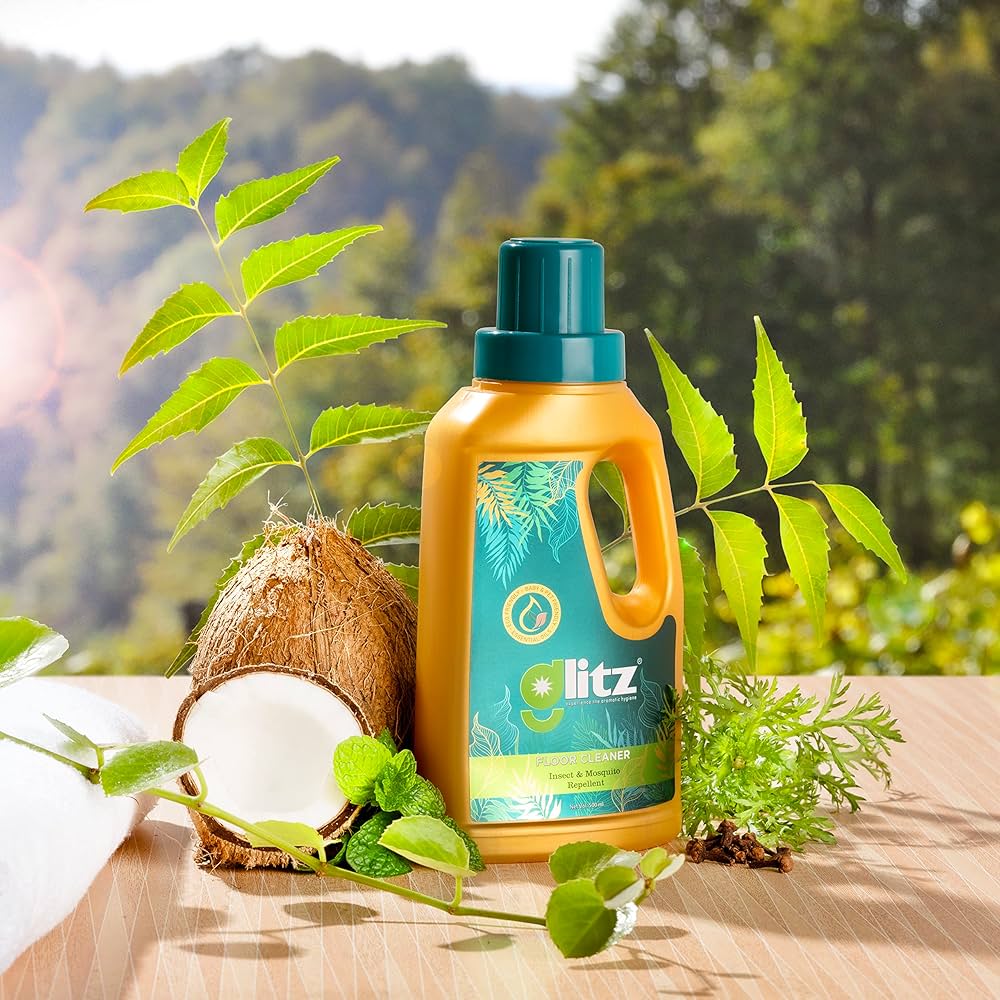
Wrap Up
Dealing with boxelder bugs doesn’t have to be a frustrating annual war waged with toxic chemicals. As I’ve found, the most successful approach involves a smart combination of techniques: using the soap-and-water spray or the vacuum for those immediate, large-scale cleanups, and coupling that with the long-term preventive measures like exclusion maintenance and targeted clean-up. Consistency is key here—especially during those crucial months between late August and November when they are actively seeking warmth.
By embracing these natural, easy-to-implement solutions, you are keeping your family and the environment safer while still protecting your home from invasion. Taking control with simple tools is far more satisfying than spraying blindly.
Which of these natural methods are you planning to incorporate into your pest control routine this year? Do you have any other non-toxic tips that have worked wonders for you? I’d love to hear your experiences and successes in the comments below!

